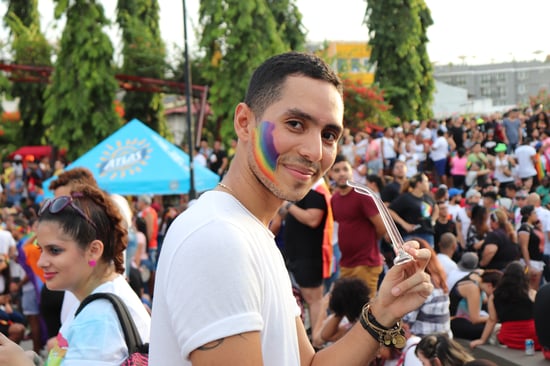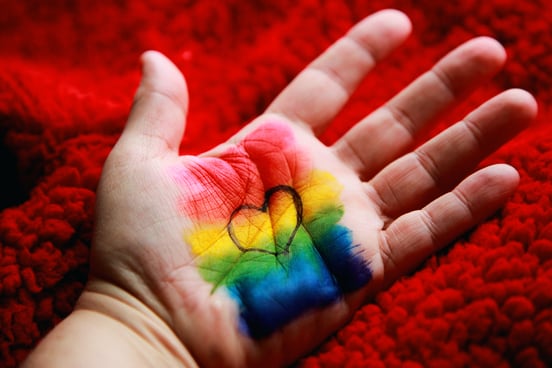By Zayro Jimenez, LAC, Behavioral Health Manager
Throughout my life, I haven’t always felt like I could be myself. Growing up on the border in Nogales, I didn’t feel like I had a safe space to come out as gay and be authentically me. People calling out my flamboyant behavior further pushed me to internalize my feelings and even isolate myself. No one deserves to feel uncomfortable being their authentic selves, so I coped by offering a listening ear to relatives, friends, and peers in need — to hear the unheard.
It wasn’t until I saw “Freaky Friday” (the 2003 remake starring Jamie Lee Curtis and Lindsay Lohan), that I knew I wanted to pursue a career in mental health. Jamie Lee Curtis plays a compassionate therapist, and I wanted to be just like that to help other people feel heard, included, and understood — especially regarding their mental health needs.
My passion was fueled by understanding how other people like me, were suffering greatly. Unfortunately, according to the American Psychiatric Association, members of the LGBTQIA community are more than twice as likely as heterosexual men and women to have a mental health disorder in their lifetimes. As a Licensed Associate Counselor at evolvedMD, a company whose people-first culture empowers me to be my true authentic self, I’ve made it part of my mission to break down the barriers to quality mental health services for this community so they, too, can feel empowered and be their authentic selves. In my short time here, evolvedMD has made it possible for me to advocate on behalf of my community as evident by this piece highlighting how to best serve LGTBQIA individuals.
What barriers exist for the LGBTQIA community to receive quality mental health care?

This Pride Month, there's a lot to celebrate as we commemorate the LGBTQIA community's many achievements in the fight for equity and inclusion, but there’s still a lot more work to be done--especially in mental health. In my professional experience, there are numerous barriers to quality mental health services that need to be addressed, including:
- Feeling a provider would not understand an individual’s sexual orientation or identity
- Lack of access because of discrimination
- A shortage of nearby mental health professionals
- Unaffordable care, with some services costing $150–$200 per visit
- Not having a dependable support system
- Not having a safe space to be themselves
- Lack of education and misinformation
- Lack of health insurance and resources sometimes due to discrimination bans
The state of mental health in America is certainly harrowing, and in a survey of LGBTQIA people, more than half of all respondents reported facing cases of providers denying care, using harsh language, or blaming the patient's sexual orientation or gender identity as the cause for an illness. Despite monumental progress, the odds are stacked against the LGBTQIA community compared to other groups, but there are solutions we can implement to create meaningful change.
How to overcome these barriers

Behavioral Health Integration: Integrating behavioral health services not only increases access to care, but also treats the whole patient for both physical and mental health needs. This includes embedding licensed mental health professionals at primary care practices. As an employee of evolvedMD, I’m embedded in a collaborative care team onsite at one of the practices we serve, closely coordinating care with an individual’s primary care provider (PCP), a psychiatric consultant, and others. In my experience, if an LGBTQIA individual sees that their PCP is an ally, they may feel more comfortable seeing a therapist onsite at the same location, knowing they would collaborate to coordinate whole-patient care.
Create a Supportive Environment: First and foremost, the LGBTQIA community need a safe space to be themselves — be it at home, at work, at their doctor’s office, etc. Start by simply listening to, understanding, and reflecting an individual’s choice of language when describing their own identity goes a long way to ensuring they feel heard.
Find Providers Who Are Allies: Distrust and fear will only push people away from seeking out the care they desperately need. LGBTQIA folks can always ask their peers if they know anyone, but even that can be limiting depending on the type of care they’re seeking. I recommend checking a resource such as the Gay and Lesbian Medical Association (GLMA) to find a provider you can trust in your community. No matter how one identifies, they can simply check this organization’s Provider Directory for all kinds of healthcare providers, including licensed mental health professionals.
Provide Educational Resources for Providers: Education is one of the most effective ways to reduce stigma and discrimination. In a paper titled “Cultural Competence in the Care of LGBTQ Patients,” the authors do a great job of outlining how providers can better understand and consider the needs of patients without bias. Whether it’s understanding a wide variety of identifying terms, challenges to caring for members of the community, or creating a more welcoming practice, this educational resource is the perfect starting point to align providers and their teams.
Provide Resources for Medical Assistance and Legal Matters: Just as we should arm providers with resources to better serve individuals identifying as LGBTQIA, we must also provide resources to the community directly, as there is much misinformation available. For example, individuals can reach out to free and confidential peer support through the LGBT National Help Center hotline. They can also find support through The Trevor Project, the world’s largest suicide prevention and crisis intervention organization for people identifying as LGBTQIA.
It breaks my heart knowing that stigma and discrimination deter many members of the LGBTQIA community from seeking help. But the solutions above are some ways to break barriers and ignite meaningful change. If you identify with the community or are an ally looking to support people in the community, I’ve curated a handful of resources below in addition to the ones I’ve already mentioned. I hope the solutions and resources provided in this article serve you well in your journey to prioritize your mental health and be your authentic self.
Additional Resources